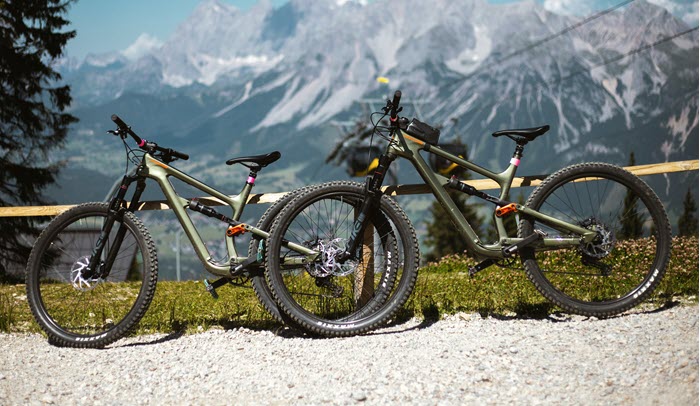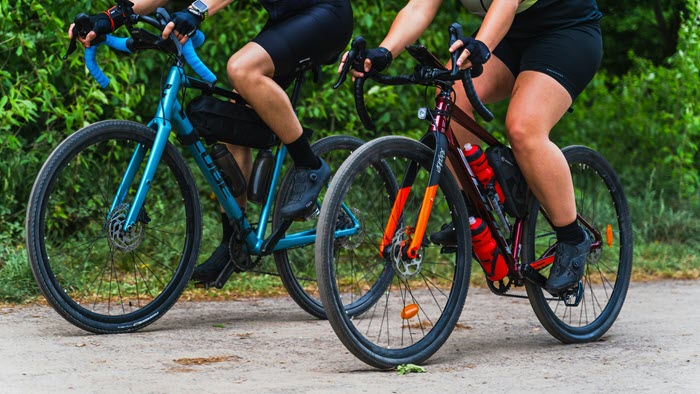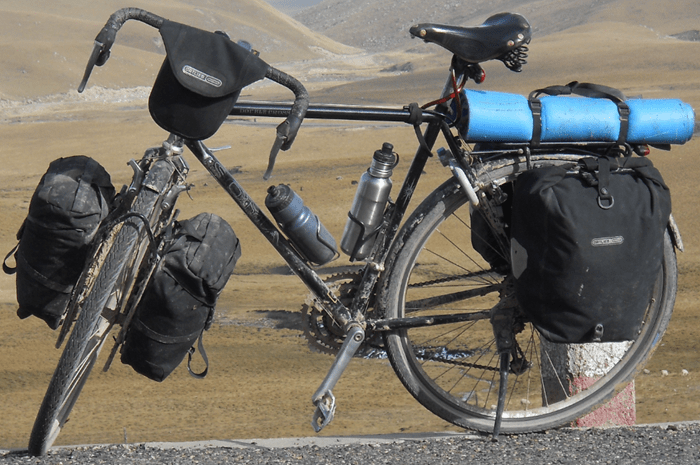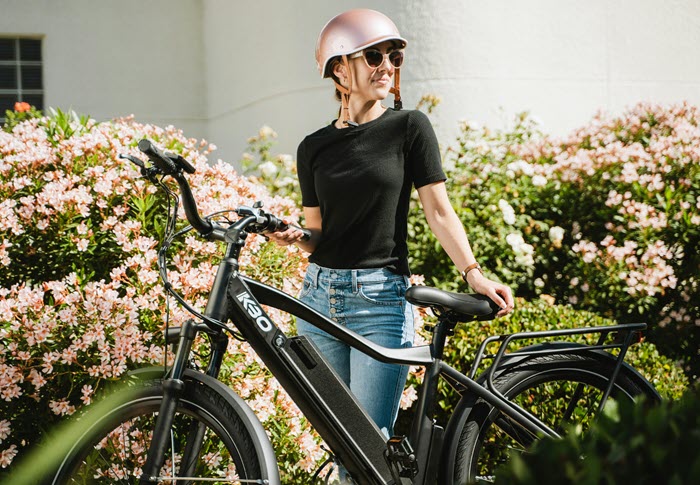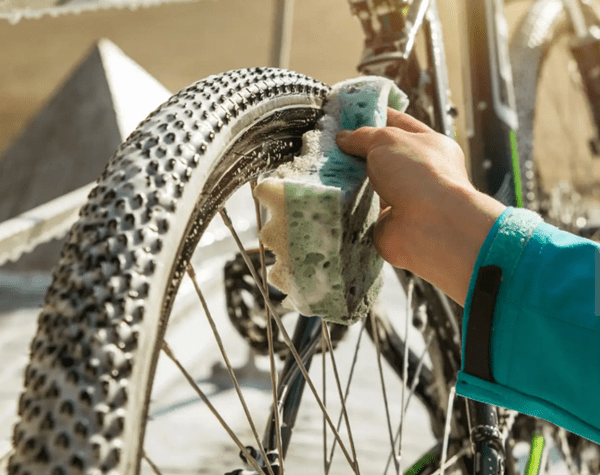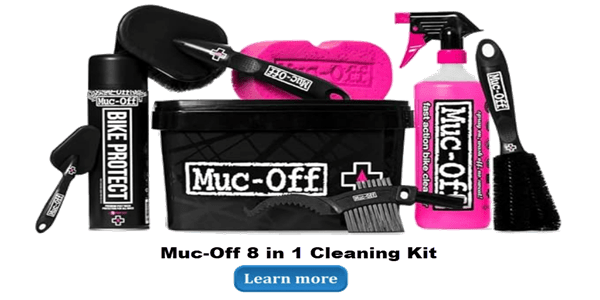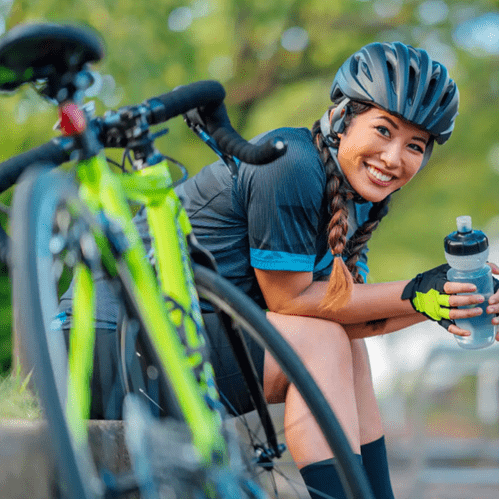Contents
- 1 Bicycle Buying Guide: The Right Bike
- 1.1 Understanding Your Needs
- 1.2 Types of Bicycles
- 1.3 Key Features to Consider
- 1.4 Sizing Your Bike
- 1.5 Budgeting for Your Bike
- 1.6 Test Riding Tips
- 1.7 New vs. Used Bikes
- 1.8 Shopping Online vs. In-Store
- 1.9 Essential Accessories
- 1.10 Maintenance and Care
- 1.11 Making the Final Decision
- 1.12 Conclusion
- 1.13 More Cycling Tips and Informational Articles
Bicycle Buying Guide: The Right Bike
Welcome to the ultimate bicycle buying guide! Choosing the right bike isn’t just about finding a set of wheels; it’s about unlocking a world of adventure, freedom, and fitness. Imagine cruising down scenic trails, conquering rugged terrains, or zipping through city streets with effortless grace. The perfect bike can transform your daily commute into a joyride or turn your weekend into a thrilling expedition.
But with countless options out there, how do you decide? This guide will demystify the process, helping you navigate the maze of choices and pinpoint the bike that fits your lifestyle, needs, and dreams. Let’s embark on this journey together, and soon you’ll be pedaling towards new horizons with confidence and excitement!
Understanding Your Needs
What Type of Cyclist Are You?
Before diving into the myriad of bike options, it’s crucial to this bicycle buying guide that you understand your cycling persona. Are you a weekend warrior seeking adrenaline-pumping trails, or a commuter looking to breeze through urban congestion? Perhaps you’re a fitness enthusiast, eager to add a cardiovascular twist to your routine. Each cyclist has unique needs, and identifying where you fit in this spectrum is the first step.
Think about your current lifestyle and how you envision incorporating cycling into it. If you’re drawn to nature and rugged terrains, a mountain bike might be your calling. On the other hand, if speed and efficiency on paved roads appeal to you, a road bike could be the perfect match. Hybrid bikes offer a versatile blend for those who want a bit of everything.
Identifying Your Primary Riding Purpose
Let’s dig deeper into this bicycle buying guide and your primary riding purpose. This is where you match your cycling persona with real-world applications. Consider where you’ll be riding most often. Is it smooth city streets, uneven country roads, or off-road trails? Each environment demands specific features in a bike, from tire types to suspension systems.
Daily commuters need durability and reliability. Look for bikes with sturdy frames and comfortable seating. If your goal is to conquer hills and rough paths, you’ll need a bike with advanced gearing systems and robust suspension types. Fitness cyclists might prioritize lightweight frames and efficient gear ratios for those long, calorie-burning rides.
Reflect on your aspirations, too. If you plan to join group rides or races, performance and aerodynamics become paramount. For leisurely weekend rides, cycling comfort and ease of use will enhance your experience. By pinpointing your primary riding purpose, you streamline your search and ensure your new bike complements your lifestyle perfectly.
Types of Bicycles
Road Bikes: Speed and Performance
If the thought of slicing through the wind on smooth pavement excites you, a road bike might be your perfect match. Designed for speed and efficiency, road bikes boast lightweight frames and skinny tires that minimize rolling resistance. They’re all about performance, built to go fast and far with minimal effort.
Whether you’re chasing personal bests or planning long-distance cycling, the aerodynamic design and multiple gearing options make road bikes ideal for asphalt adventures. Get ready to experience the thrill of speed as you glide effortlessly across the pavement.
Mountain Bikes: Off-Road Adventures
For those who crave the rugged beauty of untamed trails, mountain bikes offer the ultimate off-road cycling experience. Equipped with sturdy frames, wide knobby tires, and powerful suspension systems, these bikes are built to tackle everything from rocky paths to steep descents.
The robust construction ensures durability, while advanced gearing helps you conquer challenging climbs. Whether you’re navigating forest trails, descending mountain slopes, or exploring backcountry routes, mountain bikes provide the resilience and control needed for thrilling off-road escapades.
Gravel Bikes: The Bicycle Buying Guide Best of Both Worlds
Gravel bikes are the versatile chameleons of the cycling world. Combining elements of road and mountain bikes, they excel on diverse terrains. With wider tires and a more relaxed bike geometry, gravel bikes offer stability and comfort on both paved roads and gravel paths.
They’re perfect for cyclists who want to explore beyond the tarmac without sacrificing speed. Imagine a bike that effortlessly transitions from city streets to countryside lanes, giving you the freedom to adventure wherever your curiosity leads. Gravel bikes are your go-anywhere, do-anything ride.
Touring Bikes: Long-Distance Comfort
Dreaming of epic journeys and scenic tours? Touring bikes are engineered for long-haul comfort and reliability. Designed to carry heavy loads, these bikes feature sturdy frames, multiple mounting points for racks and panniers, and a relaxed riding position to reduce fatigue on extended trips.
The gearing systems are optimized for steady pedaling, even when fully loaded. Whether you’re planning cross-country rides or leisurely weekend tours, touring bikes offer the perfect blend of endurance and comfort, turning every trip into a memorable voyage.
Electric Bikes: Boost Your Ride
Electric bikes, or e-bikes, are revolutionizing the cycling experience. Equipped with a battery-powered motor, e-bikes provide a significant boost to your pedaling power, making uphill climbs and long distances easier than ever.
Perfect for bike commuting, recreational riders, and anyone looking to extend their range without extra effort, e-bikes combine traditional cycling with modern technology.
The motor assistance can be adjusted to suit your needs, whether you want a gentle push or a powerful surge. Embrace the future of cycling with an e-bike and enjoy a ride that’s both exhilarating and effortless.
Key Features to Consider
Frame Material: Aluminum, Carbon, Steel, or Titanium?
The frame is the backbone of your bike, and choosing the right material can significantly impact your ride. Aluminum frames are popular for their lightweight and affordability, making them a great choice for beginners and casual riders. They offer a good balance of strength and weight, ideal for most cycling needs.
Carbon fiber frames, on the other hand, are all about performance. Known for being incredibly light and stiff, carbon frames absorb road vibrations well, providing a smooth and responsive ride. They’re perfect for serious cyclists who prioritize speed and efficiency.
Steel frames are the classics. They’re durable, comfortable, and offer a smoother ride due to their natural shock-absorbing properties. Although heavier than aluminum or carbon, steel is beloved by touring cyclists and those who appreciate its resilience and vintage charm.
Titanium frames are the pinnacle of bike frame materials. They combine the best qualities of steel and carbon: lightness, strength, and comfort. Titanium is corrosion-resistant and incredibly durable, making it a lifetime investment. If you’re looking for a bike that offers superior ride quality and longevity, titanium is the way to go.
Gearing Systems: Simplifying Your Options
Gearing systems can seem complex, but understanding them is essential for choosing the right bike. Essentially, gears help you maintain a comfortable pedaling speed regardless of the terrain. Bikes come with a range of gears, from single-speed options to intricate systems with 30 or more gears.
Single-speed bikes are straightforward and low-maintenance, ideal for flat terrain and urban commuting. They’re perfect for riders who prefer simplicity and don’t need to tackle steep hills.
Multi-speed bikes offer more versatility. A typical setup might include 18, 21, or even 27 gears, allowing you to adjust your pedaling effort to match the terrain. This is particularly useful for hilly areas or long-distance rides.
Modern bikes often feature derailleur gears or internal hub gears. Derailleur systems are common and provide a wide range of gear ratios, but they require more maintenance. Internal hub gears are enclosed, making them low-maintenance and weather-resistant, though they can be heavier and more expensive.
Brake Types: Rim, Disc, and Beyond
Brakes are crucial for safety and performance. The two main types are rim brakes and disc brakes. Rim brakes, which grip the wheel rim to slow down, are lightweight and easy to maintain. They’re effective in dry conditions but can lose efficiency in wet or muddy environments.
Rim brakes, which grip the wheel rim to slow down, are lightweight and easy to maintain. They’re effective in dry conditions but can lose efficiency in wet or muddy environments.
Disc brakes, either mechanical or hydraulic, offer superior stopping power and consistency in all weather conditions. Mechanical disc brakes use cables, while hydraulic systems use fluid, providing more precise control and less maintenance. Although slightly heavier, disc brakes are favored by mountain bikers and road cyclists who ride in varied conditions.
There are also drum brakes and coaster brakes, though they’re less common. Drum brakes are enclosed and require little maintenance, often found on utility bikes. Coaster brakes, which engage when you pedal backward, are simple and typically found on cruiser bikes and children’s bikes.
Suspension: When You Need It and When You
Suspension systems absorb shocks from rough terrain, improving comfort and control. They’re essential for mountain bikes but less critical for road and hybrid bikes.
Front suspension, or a hardtail, has a suspension fork at the front wheel. It’s great for handling bumps and providing control on rough trails. Full suspension bikes have both front and rear suspension, offering maximum comfort and control on the most challenging terrains.
For road and hybrid bikes, suspension is less common and often unnecessary. The added weight and complexity can outweigh the benefits on smooth surfaces. However, some hybrid bikes feature front suspension to handle occasional rough paths.
Choosing the right suspension depends on your riding style and terrain. For rugged off-road adventures, full suspension is the way to go. For mixed terrain or smoother paths, a hardtail or no suspension may be more efficient.
These key features—frame material, gearing systems, brake types, and suspension—play a significant role in how your bike performs and feels. By understanding and considering these elements, you’ll be well-equipped to choose a bike that perfectly suits your needs and enhances your cycling experience.
Sizing Your Bike
How to Measure for the Perfect Fit
Finding the perfect bike size is crucial for comfort and performance. An ill-fitting bike can lead to discomfort, pain, and even injury. Start by measuring your inseam. Stand with your feet about 6 inches apart and measure from the ground to your crotch. This measurement helps determine the right frame size.
Next, consider your torso length and arm span. These measurements help fine-tune the fit, ensuring you’re not overreaching or cramped while riding. Many bike shops offer professional bike fit services, which can be invaluable in finding your ideal size.
Importance of Frame Size and Geometry
The frame size is the cornerstone of bike sizing. It’s usually measured from the center of the bottom bracket to the top of the seat tube. Different brands may have slight variations, so always refer to the specific sizing chart for the bike you’re interested in.
Geometry, including the angles and lengths of the bike frame, plays a significant role in how a bike handles. A road bike with a steep head angle offers nimble handling, perfect for racing. In contrast, a touring bike with a slacker angle provides stability for long rides with loaded panniers.
Stand over height, the clearance between you and the top tube when standing over the bike, is another critical factor. Ensure there’s at least an inch of clearance to avoid any discomfort or injury during sudden stops.
Adjusting Seat and Handlebar
Once you have the right frame size, fine-tuning the seat and handlebar heights is essential. Start with the seat height. When sitting on the saddle, your leg should have a slight bend at the knee when the pedal is at its lowest point. This position maximizes power and reduces strain on your knees.
Adjusting the fore-aft position of the saddle can also enhance comfort. Generally, your knee should be directly over the pedal axle when the pedal is in the forward position. This alignment helps distribute your weight evenly and improves pedaling efficiency.
Handlebar height influences your riding posture. A lower handlebar position offers a more aerodynamic stance, ideal for road biking. Raising the handlebars can provide a more upright, relaxed posture, perfect for commuting or casual rides. Experiment with different positions to find what feels best for you.
Budgeting for Your Bike
Setting a Realistic Budget
Buying a bike is an investment in your health, transportation, and adventure. It’s essential to set a realistic budget that aligns with your needs and financial situation. Determine what you’re willing to spend and stick to it.
Remember, a higher price tag doesn’t always mean the best fit for you. Consider how often you’ll ride and the type of terrain you’ll tackle. If you’re a casual rider, you might not need a high-end bike. Conversely, frequent cyclists might benefit from investing in a more durable, higher-quality bike.
Balancing Cost with Quality and Features
Finding the balance between cost, quality, and features is key. Cheaper bikes might save you money upfront, but they could lack durability and bike performance, leading to more frequent repairs and replacements.
On the other hand, premium bikes offer advanced features and superior build quality, but they come at a higher price. Look for bikes that offer the best value within your budget. Consider the frame material, components, and brand reputation. Often, mid-range bikes provide an excellent balance of quality and cost, offering reliable performance without breaking the bank.
Hidden Costs: Accessories, Maintenance, and More
When budgeting for your bike, don’t overlook the hidden costs. Cycling accessories such as helmets, lights, bike locks, and repair kits are essential for safety and convenience. These can add up quickly, so include them in your budget.
Maintenance is another critical aspect. Regular servicing, tire replacements, and brake adjustments are necessary to keep your bike in top shape. While some maintenance tasks are DIY-friendly, others might require professional assistance, which adds to the overall cost.
Lastly, think about potential cycling upgrades. As you grow more comfortable with your bike, you might want to enhance it with better components, more comfortable saddles, or advanced gearing systems. Planning for these future expenses ensures you’re not caught off guard.
Test Riding Tips
What to Look for in a Test Ride
Test riding is an essential step in the bike-buying process. It’s your chance to feel the bike’s true character and see if it aligns with your expectations. When you take a bike for a test ride, pay attention to how it feels as soon as you hop on.
Does the bike feel balanced and stable? Does it respond well to your inputs? Take note of the bike’s handling, braking, and acceleration. A good test ride should include various terrains if possible, like smooth pavements, rough patches, and inclines, to gauge the bike’s versatility.
Evaluating Comfort and Performance
Comfort is paramount. During your test ride, evaluate how the bike feels under different conditions. Check the saddle: is it comfortable, or does it feel like it might cause discomfort on longer rides? Pay attention to the handlebars and grips—are they easy to reach and hold? Your riding posture should be natural and strain-free.
Performance is equally crucial. Test the bike’s gears to see how smoothly they shift. Try accelerating quickly and braking suddenly to assess responsiveness. Does the bike maintain stability at high speeds? How does it handle corners and turns? These performance checks will help you determine if the bike meets your riding style and needs.
Questions to Ask During Your Test Ride
During your test ride, don’t hesitate to ask questions. Knowledgeable staff can provide valuable insights into the bike’s features and capabilities. Here are some questions to consider:
How often does this bike need maintenance?
What are the most common issues other riders have faced with this model?
Are there any bike warranties or guarantees included with the purchase?
Can the bike be easily upgraded with new components if needed?
How does this bike compare to similar models in its price range?
These questions help you understand not only the bike’s immediate performance but also its long-term reliability and potential for upgrades. A thorough test ride combined with insightful questions ensures that you make a well-informed decision.
New vs. Used Bikes
Pros and Cons of Buying New
Buying a new bike comes with several advantages. New bikes feature the latest technology, ensuring you benefit from advancements in design, materials, and performance. They also come with warranties and support from the manufacturer, giving you peace of mind. Additionally, a new bike is a blank slate—no wear and tear from previous owners, meaning you can expect a longer lifespan with proper bike maintenance.
However, new bikes come at a premium price. The initial cost is higher, and there might be additional expenses for necessary accessories. If you’re on a tight budget, this can be a significant consideration. New bikes also depreciate quickly, much like new cars, so the bike resale value might drop sharply if you decide to upgrade in the future.
What to Watch Out for with Used Bikes
Buying a used bike can save you a considerable amount of money, but it comes with its own set of risks. The most important thing to watch out for is the condition of the bike. Look for signs of excessive wear and tear, such as rust, cracks, or dents in the frame. Check the drivetrain components—chain, cassette, and derailleurs—to see if they need replacement. Test the brakes and ensure they function correctly.
Ask the seller about the bike’s history. How often was it ridden and under what conditions? Has it been regularly maintained? If possible, have a professional mechanic inspect the bike before you purchase it. Be cautious of deals that seem too good to be true; they often come with hidden issues that could cost more in repairs than the savings from buying used.
Where to Find Quality Used Bikes
Finding a quality used bike requires a bit of research and patience. Local bike shops often sell trade-ins and refurbished bikes, providing a balance between cost and quality assurance. These shops typically offer some form of warranty or service guarantee, which can be invaluable.
Online marketplaces like Craigslist, eBay, and Facebook Marketplace are popular options, but exercise caution. Meet sellers in public places, and if possible, bring a friend or a knowledgeable cyclist to help assess the bike. Look for detailed listings with clear photos and thorough descriptions.
Dedicated online platforms like The Pro’s Closet specialize in pre-owned bikes and provide certified inspections, ensuring you get a bike in good condition. Cycling forums and local bike clubs can also be excellent resources for finding trusted sellers.
Shopping Online vs. In-Store
Benefits of Buying Online
Buying a bike online offers unparalleled convenience. You can browse countless options from the comfort of your home, comparing models, features, and prices with ease. Online bike stores often have extensive inventories, including bike brands and models that might not be available at your local bike shop. Moreover, many online stores provide detailed cycling reviews from other customers, giving you insights into the bike’s performance and reliability.
Another significant advantage of online shopping is the potential for better deals. Online retailers frequently offer promotions, discounts, and exclusive sales, making it possible to find high-quality bikes at a fraction of the cost. Additionally, the absence of physical storefront costs often translates into lower prices for consumers. Just ensure you’re buying from a reputable site and check their return policies before making a purchase.
Advantages of In-Store Purchases
Purchasing a bike in-store provides a hands-on experience that online shopping simply can’t match. You can see, touch, and test ride the bike, ensuring it fits you perfectly and feels comfortable. Expert staff are available to answer your questions, provide recommendations, and offer personalized fitting services. This level of interaction and support can be invaluable, especially for first-time buyers.
In-store purchases also come with the benefit of immediate service and maintenance. Many bike shops offer free tune-ups and adjustments within the first few months, ensuring your bike remains in top condition. You can establish a relationship with the shop, gaining access to ongoing support, advice, and community events. This local connection can enhance your overall cycling experience.
Combining Both for the Best Deal
Why choose between online and in-store when you can leverage the advantages of both? Start your search online to narrow down your options and identify the best deals. Besides this bicycle buying guide, take advantage of online resources like reviews and bike comparison tools to make an informed decision. Once you have a shortlist, visit local bike shops to test ride the models you’re interested in.
Discuss the online prices with the in-store staff. Often, local shops are willing to match or come close to online prices, especially if it means securing your business. Combining the convenience of online shopping with the personalized service of in-store purchases ensures you get the best bike for your needs at a competitive price.
Essential Accessories
Helmets: Safety First
Safety should always be your top priority when cycling. A high-quality helmet is essential. It protects your head from injuries and can be a lifesaver in case of an accident. Look for helmets that meet helmet safety standards and offer a comfortable fit. Features like adjustable straps, good ventilation, and a secure buckle system enhance both protection and comfort. Investing in a durable, well-fitting helmet is non-negotiable—your safety depends on it.
Lights and Reflectors: Be Seen, Be Safe
Part of this bicycle buying guide is also about being safe. Visibility is crucial, especially if you ride in low-light conditions or busy urban areas. Equip your bike with bright front and rear lights. LED lights are an excellent choice, offering powerful illumination and long battery life. Don’t forget reflectors on your bike’s wheels and pedals. Wearing reflective gear or accessories can further increase your visibility to motorists. Being seen can prevent accidents, making these accessories vital for every cyclist.
Locks: Protecting Your Investment
A good lock is essential to protect your bike from theft. There are various types of locks, including U-locks, chain locks, and folding locks. U-locks are highly secure and difficult to break. Chain locks offer flexibility and can secure multiple parts of your bike. Folding locks are compact and convenient to carry. Choose a lock that suits your needs and always secure your bike to a solid, immovable object. Remember, a secure bike is a lasting investment.
Comfortable Saddles and Grips
Comfort is key to enjoying your rides, and the right saddle can make a significant difference. Saddles come in various shapes and sizes, so it’s important to find one that matches your riding style and body type. Consider padded saddles with gel or foam for extra comfort on long rides. Some saddles also feature cutouts to reduce pressure and improve airflow.
Believe it or not, handlebar grips also play a crucial role in comfort and control. They can be an important part of this bicycle buying guide. Ergonomic grips can prevent numbness and reduce strain on your hands and wrists. Look for grips with cushioning and non-slip surfaces to enhance your riding experience. Comfortable saddles and grips can transform your bike rides, making them more enjoyable and less strenuous.
Maintenance and Care
Basic Maintenance Tips for Longevity
Regular maintenance is essential to keep your bike running smoothly and extend its lifespan. Start with cleaning your bike regularly to remove dirt and grime that can wear down components. Use a soft brush and mild soapy water to clean the frame, followed by a rinse and dry with a clean cloth. Lubricate the chain after cleaning to ensure smooth operation and reduce wear.
Check your tire pressure before every ride. Properly inflated tires improve efficiency and reduce the risk of flats. Inspect your brakes frequently, ensuring the pads are not worn out and the cables are tight. Adjust the gears if you notice any shifting issues. Regularly inspect the bolts and screws on your bike to ensure they are tight and secure.
Bicycle Buying Guide: Tools Every Cyclist Should Own
Having the right bike repair tools on hand can make a big difference in maintaining your bike. A basic toolkit should include tire levers, a multi-tool with various hex wrenches, a chain tool, and a portable pump. Tire levers make it easier to remove tires when fixing flats. A multi-tool helps with a range of adjustments, from tightening bolts to adjusting saddle height.
A chain tool is essential for repairing or replacing your bike chain. A portable pump ensures you can inflate your tires anywhere, anytime. Additionally, consider carrying a patch kit or spare tube for quick fixes on the go. These tools empower you to handle most minor repairs and adjustments, keeping your bike in top condition.
Finding a Reliable Bike Mechanic
While DIY maintenance is important, having a reliable bike mechanic is invaluable. A professional mechanic can handle more complex repairs and provide routine tune-ups to keep your bike running optimally. Part of this bicycle buying guide is to find a trustworthy mechanic, ask for recommendations from fellow cyclists or check online reviews of local bike shops.
Visit a few shops and talk to the mechanics. Look for someone who is knowledgeable, approachable, and willing to explain their work. A good mechanic will offer preventive maintenance tips and ensure your bike is safe and well-maintained. Building a relationship with a reliable mechanic can give you peace of mind and keep your bike in excellent shape for years to come.
Making the Final Decision
Reviewing Your Options
Now that you’re reading the bicycle buying guide, it’s time to review your options after researching, test riding, and comparing different bikes. Start by listing the pros and cons of each bike you’ve considered. Consider the key features, such as frame material, gearing system, and brake type, and how they align with your riding needs and preferences.
Reflect on your test ride experiences. Which bike felt the most comfortable? Which one handled the terrain best? Look back at your budget. Ensure the bike you’re leaning towards fits within your financial plan, including any additional accessories and future maintenance costs.
Trusting Your Instincts and Comfort
Ultimately, the best bike for you is one that feels right. Trust your instincts. If a particular bike stands out and makes you excited about riding, that’s a strong indicator. Comfort is paramount.
You should feel at ease and confident when you’re on the bike. Consider how the bike’s ergonomics align with your body and riding style. Does it feel like an extension of yourself? Can you see yourself enjoying long rides without discomfort?
Conclusion
Enjoy Your New Ride!
Congratulations! You’ve navigated the intricate process of choosing the right bike and reading our bicycle buying guide. Now it’s time to reap the rewards and enjoy your new ride. Feel the exhilaration as you pedal through scenic bike trails, explore new paths, or simply commute with ease and efficiency.
Every ride will bring a sense of freedom and adventure, making your investment truly worthwhile. Remember to take care of your bike, following the maintenance tips outlined earlier, to ensure it remains in excellent condition for years to come.
Join the Cycling Community
Cycling is more than just a mode of transportation or a hobby—it’s a vibrant community. Join local cycling clubs or online groups to connect with fellow enthusiasts. Participate in group rides, charity cycling events, and races.
These communities offer support, knowledge, and camaraderie, enhancing your cycling experience. You’ll find new friends, share tips and routes, and discover even more reasons to love your bike. Embrace the community spirit and let your passion for eco-friendly cycling grow.
We’d love to hear from you! Share your bike-buying experience in the comments below. What challenges did you face? Which bike did you ultimately choose? And, did this bicycle buying guide help you?
More Cycling Tips and Informational Articles
Stay connected and keep your cycling knowledge up-to-date. Subscribe to us on Instagram and X (Twitter) for more cycling tips, bike purchase tips, and inspirational articles. Whether you’re a seasoned cyclist or a beginner, we’ve got something for everyone.
Thank you for joining us on this journey. Happy riding!
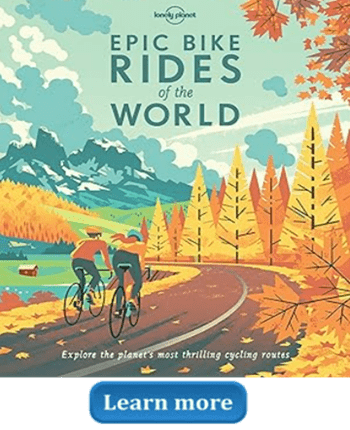 |
 |
We earn from qualified Amazon purchases with NO cost to you. ANY item that you need or were going to purchased anyway through any of our links, helps support this site. Thank you for your support!




